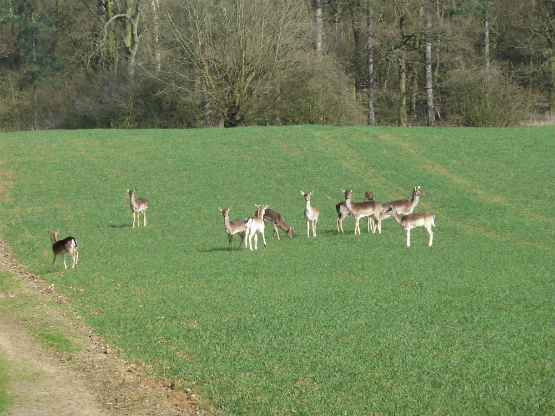The month ahead gives us the opportunity to mix things up a bit. Peter Jones explains more.

I have to be honest with you, I have never been one for early mornings, not a great attribute for a professional stalker, our office manager Luis would probably tell you, that chances are, if you book a stalk with me it’s likely to be an evening stalk. Thankfully this is not true of my colleagues and so I am happy to leave the bulk of early morning jaunts in their capable hands.
Being more of a ‘night-owl’ my aversion to early starts, is perhaps one of the reasons why I relish March so much, as this time of year represents a rare opportunity for productive mid-day stalking.
It is my experience, that in March, deer can be seen more readily in the open during the middle of the day. Why does this anomaly occur? Well, there are a number of factors.
Firstly, and most importantly, the lack of browse in the deep woodlands by the end of the winter, is at its most meagre, this contrasts with an abundance of new growth that is emerging in those areas where the first nurturing rays of spring sunshine are at their most noticeable i.e. in the fields and hedgerows. Naturally therefore, it is to these more exposed areas that malnourished deer in need of fresh vegetation gravitate.
Other reasons why deer are so noticeable are because, with the lack of ground cover, they are simply easier to spot, further-more, the urge to bathe in the warming mid-day sun becomes irresistible.
With these factors all contributing to the deer’s visible, mid-day feeding pattern, I see March as an opportunity to shake things up a bit.
As we all know deer are ‘crepuscular’ – meaning that they feed at twilight, however this is not their natural state. Deer have been conditioned to behave this way to avoid humans and by the end of the winter, having experienced us chasing them from ‘pillar to post’ in the mornings and evenings and with the other draws, we can hardly blame them for giving their feeding habits a fundamental re-think!
It is in my experience therefore, that for a few weeks, it is not only very pleasant to grant myself a few lie-ins, but it is in fact also advantageous. Don’t believe me? Well give it a try, you may be surprised. A word of caution though; Go easy, deer are at a low eb by the end of March, not to mention that the females will be heavily pregnant. The season used to close at the end of February and so having been provided with an extra month’s leeway, we should be restrained in our chase of already winter-weary animals.
If you'd like to go stalking in March then why not contact us on 0203 981 0159 or email
 IN Season in England & Wales: Roe Doe, Fallow Doe & Fallow Buck, Sika Stag & Sika Hind, Red Stag & Red Hind, CWD Buck & CWD Doe, Muntjac Buck & Muntjac Doe.
IN Season in England & Wales: Roe Doe, Fallow Doe & Fallow Buck, Sika Stag & Sika Hind, Red Stag & Red Hind, CWD Buck & CWD Doe, Muntjac Buck & Muntjac Doe.
Off Season in England & Wales: Roebuck.
In Season in Scotland: Roe Doe, Fallow Buck
Off Season in Scotland: Red Stag & Red Hind, Sika Stag & Sika Hind, Roebuck and Fallow Doe.
(Editor - Peter Jones)



















